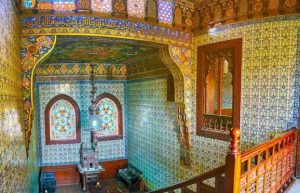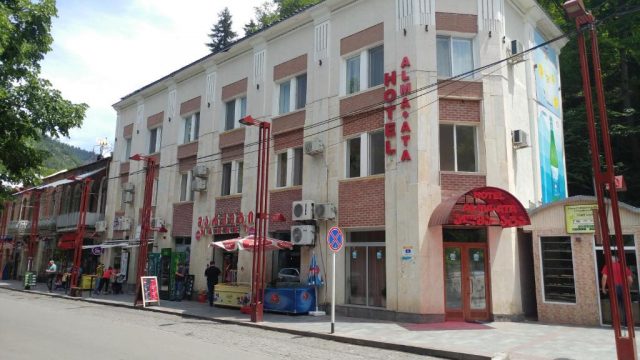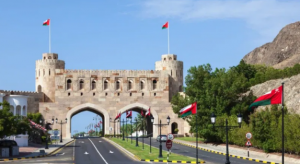List of the best museums in Cairo
Egypt is famous as one of the most important tourism destinations for lovers of antiquities and history. It includes many places and artifacts dating back to the Pharaonic civilization and the eras that followed, and among these pieces are what is displayed in the museums scattered in Cairo. .

In this report, we will present a large group of the best museums in Cairo, the “Egyptian capital”, which includes many masterpieces of the archaeological Egyptian civilization and other civilizations of different eras.
The Museum of Islamic Art
The Museum of Islamic Art is located in the Bab al-Khalq area, one of the most important tourist attractions in Cairo and one of the largest Islamic museums in the world that simulates the era of Islamic rule in Egypt. In addition to its distinctive and eye-catching architectural design that simulates the history of the period it deals with, you can enjoy viewing thousands of artifacts dating back to the Islamic era from glass and metal utensils, pieces of furniture, valuable stones, letter-writing equipment, manuscripts, with information that provides you with what you see in both languages. Arabic and English.
Tourism in Cairo, Egypt
Islamic art museum
The Egyptian Museum
One of the most important tourist attractions in Cairo, and indeed Egypt in general; It is one of its largest museums in terms of space and collectibles. The ancient museum includes about 150,000 pieces dealing with the history of Pharaonic, Roman and Greek Egypt, divided over two floors. One of them contains light objects such as small statues, manuscripts and pictures, and the other contains heavy objects such as coffins, mummies and huge statues.
The Coptic Museum
The Coptic Museum is located next to the famous Roman fortress of Babylon. It is the largest museum of Egyptian Coptic antiquities in the world. In it, you will see the most important holdings dating back to the Coptic era of Egyptian history, which number about 16,000 artifacts from different regions of Egypt. The museum is distinguished by its stone building with a distinctive architectural design that simulates its era, and its beautiful facade is similar to the Al-Aqmar Mosque, and in front of it is a statue of the founder of the museum, “Marqs Simika Pasha” adorning its entrance, and he opened it in 1910.
Museums in Cairo, Egypt
Coptic Museum المتحف
October War Panorama
The panorama of the October War is one of Cairo’s most important tourist attractions for history lovers, as the modern museum, whose date of construction does not exceed the era of the eighties, reviews the events and details of the October 73 war and how the Egyptian army achieved its victory during this great epic that the whole world has been imitating so far, through models or The performances that are presented on the museum stage, which shows its building from the outside in the form of an imposing circular building that occupies a large area on Salah Salem Road.
Abdeen Palace
One of the most important tourist places in Cairo that reviews the history of the modern royal era, starting with the era of Khedive Ismail, who took a decision to build the palace in the last quarter of the 19th century, until the end of the monarchy in Egypt with the outbreak of the 1952 revolution. The palace, which is located in the center of Cairo, reviews this era of Egypt’s history Through a group of museums located in its vicinity, it displays the precious holdings of the royal family and the weapons that were used during their reign, in addition to items donated by world leaders.
Tourism in Cairo, Egypt
Abdeen Palace
Umm Kulthum Museum
Work began to equip and set up the museum at the end of April 1998 AD. The museum was officially opened on December 28, 2001. One of the buildings attached to the Mansterly Palace was designated as a museum for the Lady of Arab Singing, on an area of 250 meters. This area is located at the end of the island of Rawda on the Nile. Among these holdings are personal items such as (clothes / accessories / bags / shoes / special tools) as well as artistic holdings such as (oud / musical notes / rare recordings / films) as well as documentary holdings such as (letters between politicians, leaders and public figures in addition to private papers and notes / rare photos / handwritten notes / memoir papers) as well as a rare collection of decorations and badges from Arab governments and patents granted
The Egyptian Museum of modern art
This museum is considered one of the most famous museums in Cairo, and this museum is located in the heart of the city of Cairo, north of Tahrir Square, and the Egyptian Museum includes many valuable artifacts, which number up to more than a thousand 150 artifacts, and the most important pieces that are present in this museum are wonderful collections One of the precious artifacts found in the tombs of the kings of the Middle Dynasty.
The museum now includes the largest collection of precious artifacts in the whole world, and these pieces were divided into groups according to their chronological order. It includes a group of prehistoric antiquities, including a different group of hunting tools and pottery, as well as a group of the founding era, including the Khasekhemwy statue, in addition to The Old State group, including the statues of Khafre, Menkaure, Djoser and others, as well as the Middle Kingdom group, including the statue of King Mentuhob II, up to the New Kingdom group, which includes the statues of Hatshepsut, and finally the group of late ages, including antiquities made of gold, all this and more inside the Museum of Egyptian Art.
Egyptian Textile Museum
an Textile Museum
The museum is considered the first of its kind in the Middle East, and ranked fourth in the world. It is located in “Al-Moez Street”, specifically near the Bain Al-Kasserine neighborhood. This museum was known in the past as Sabeel Muhammad Ali, and after the renovation of Al-Moez Street, the place was turned into the Egyptian Textile Museum.
The museum consists of two floors with eleven halls, and on the wall of each room, information about the period of textiles inside in terms of their original use, the date of manufacture and their original place is written on the wall. Behind every piece is a story or era of the eras in which the Egyptians lived, and for each era that Egypt passed through, there was a form in clothes and covers, as Egypt was a land for the whole world.
National Museum of Egyptian Civilization
The National Museum of Egyptian Civilization near the Babylon Fort overlooking Ain Al-Sira in the heart of the historic city of Fustat in the Old Cairo district of Cairo. The foundation stone was laid in 2002 to make this museum one of the most important and largest antiquities museums in the world. More than 50 thousand artifacts will tell the stages of the development of civilization from the earliest times until the modern era.
The museum’s holdings will be displayed in a permanent main exhibition dealing with the most important achievements of Egyptian civilization, in addition to six other exhibitions dealing with themes: civilization, the Nile, writing, state and society, culture, beliefs and ideas, in addition to the exhibition of royal mummies.
In 2017, within the framework of the partial opening of the museum, the temporary exhibition hall was opened, which covers an area of 1,000 square meters, and includes a temporary exhibition entitled “Egyptian Crafts and Industries through the Ages”, which aims to introduce the development of Egyptian crafts (pottery, weaving, carpentry, and jewelry). This exhibition includes about 420 artifacts selected from some museums, and many models, in addition to large screens showing a number of documentaries that deal with the history of each craft and its development through the ages.
Cairo Airport Museum
The Airport Museum was opened in 2016 in Terminal 3 at Cairo International Airport. The museum display scenario aims to highlight the civilizational development of Egypt and the diversity of its antiquities through 39 valuable artifacts that were selected from the holdings of the Egyptian Museum, the Coptic Museum, and the Museum of Islamic Art.
The museum also includes a rare collection dating back to the pre-dynastic era, a statue of the Egyptian writer dating back to the Fifth Dynasty, a group of statues dating back to the Greek and Roman eras, and Coptic icons from the eighteenth century, in addition to a group of coins, Qurans and decorated dishes dating back to different Islamic eras.




































